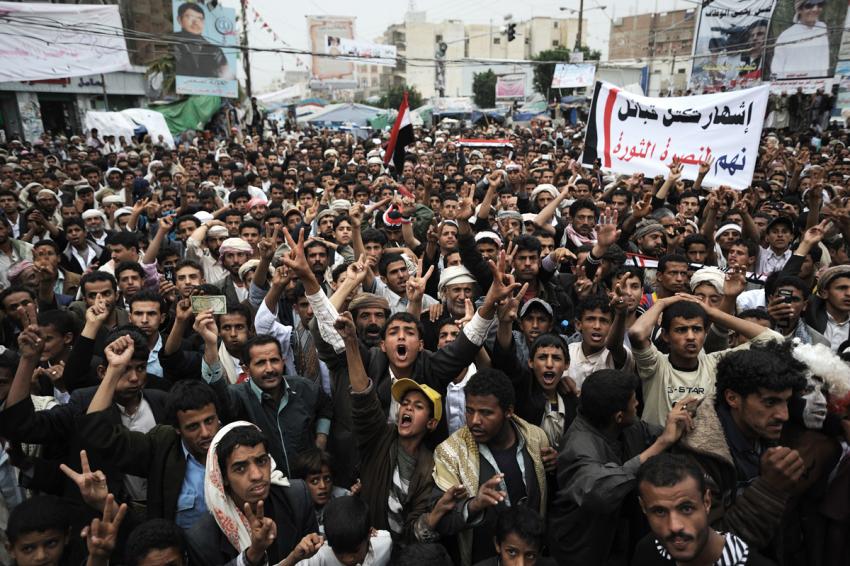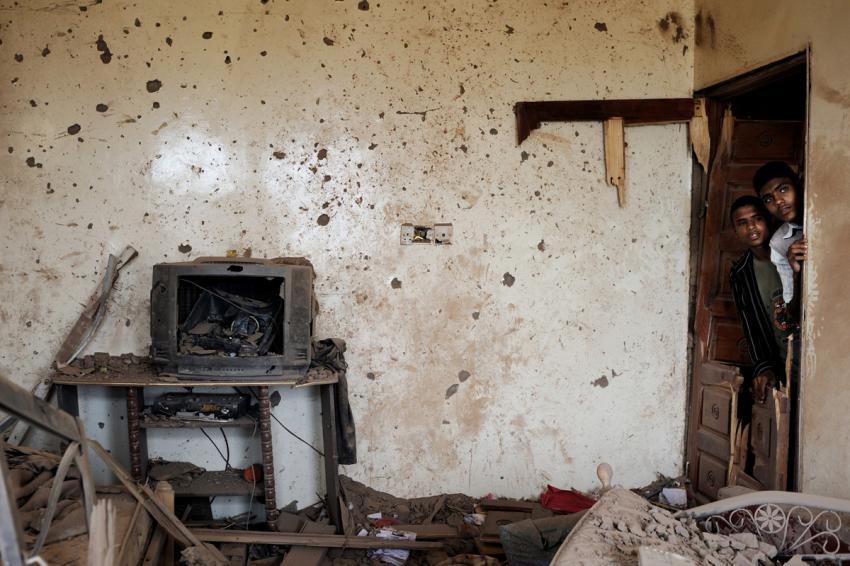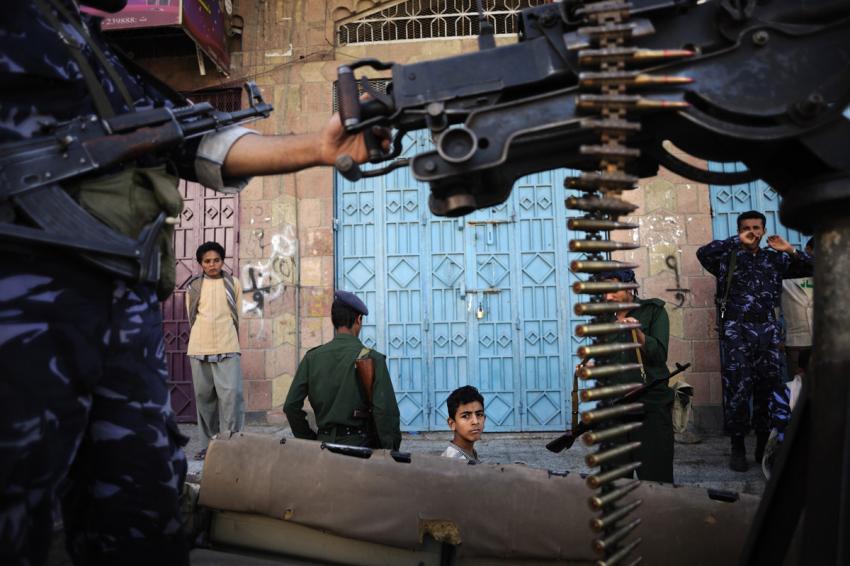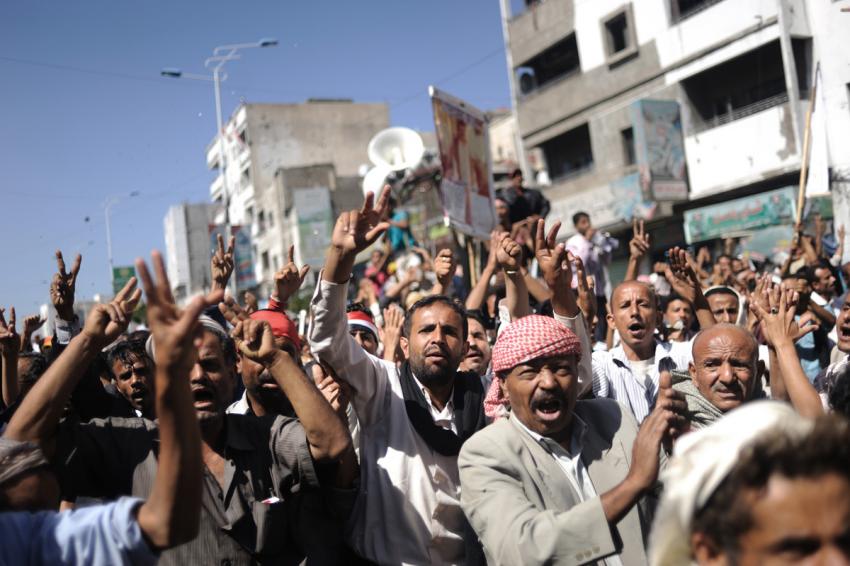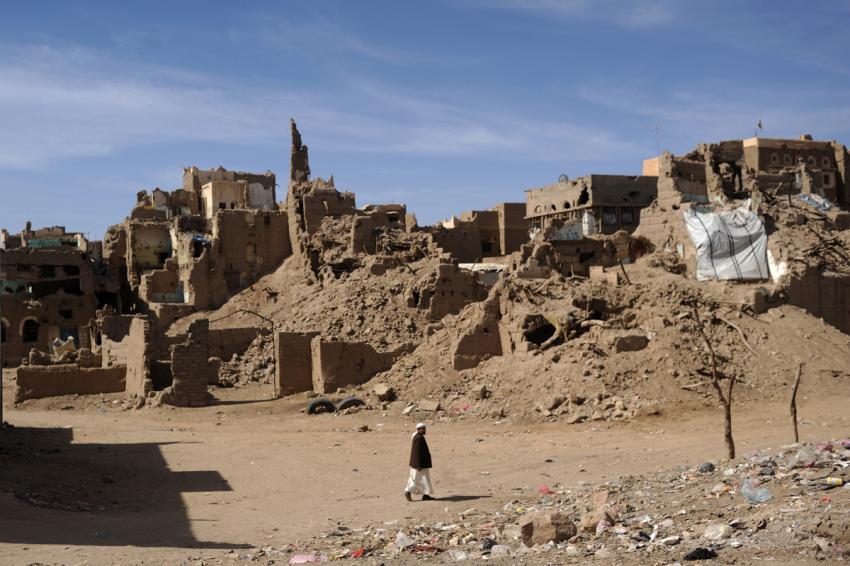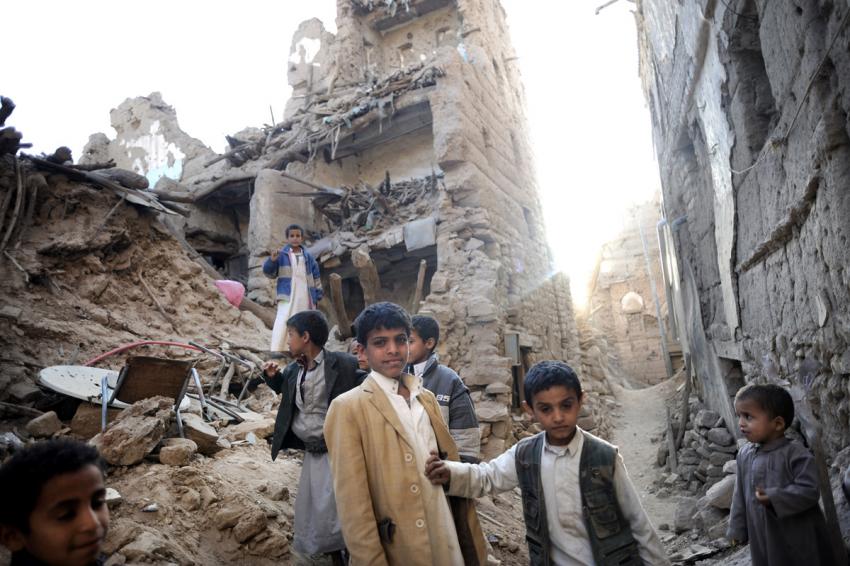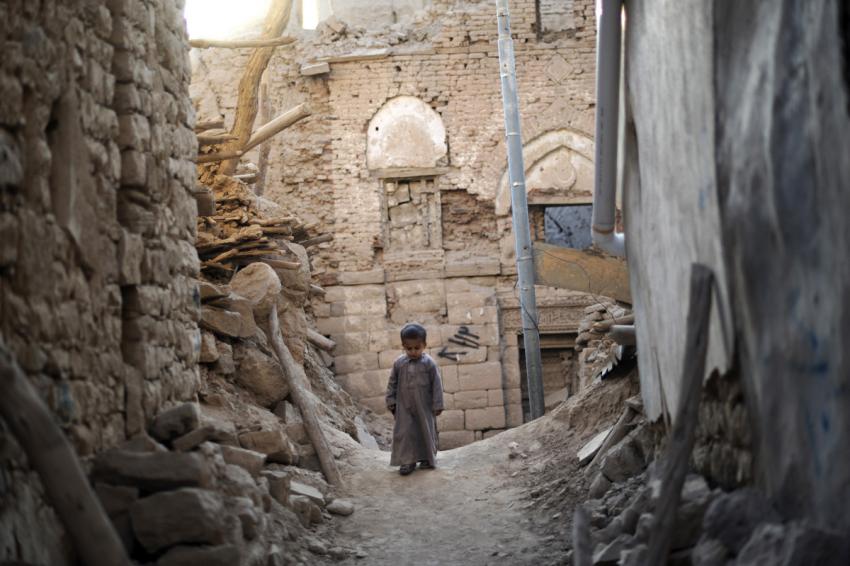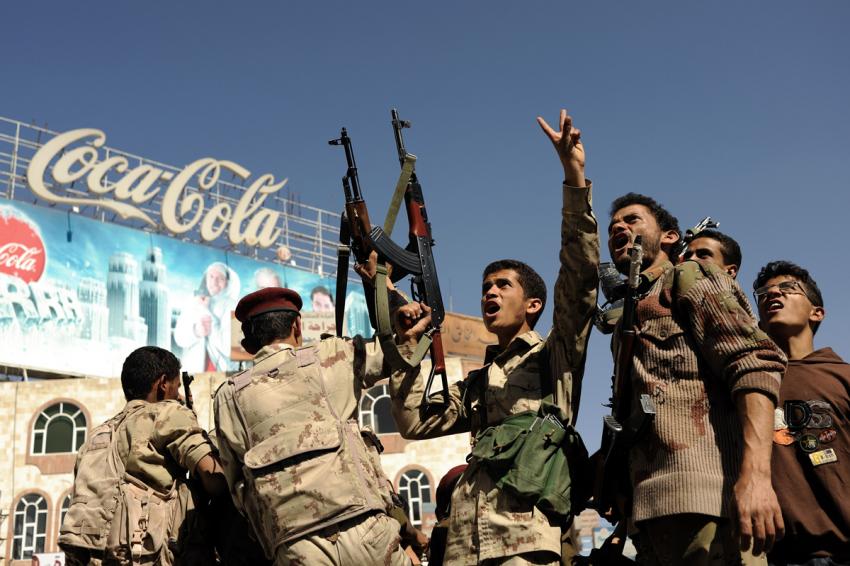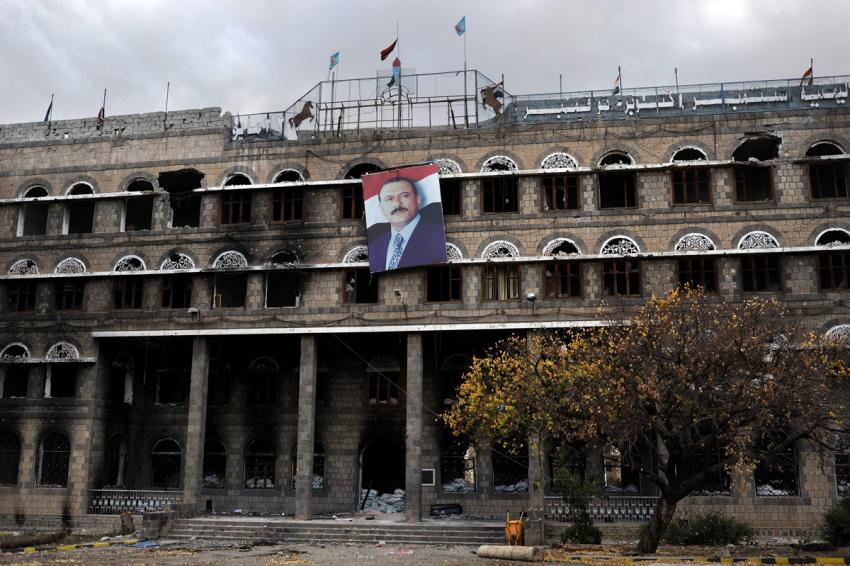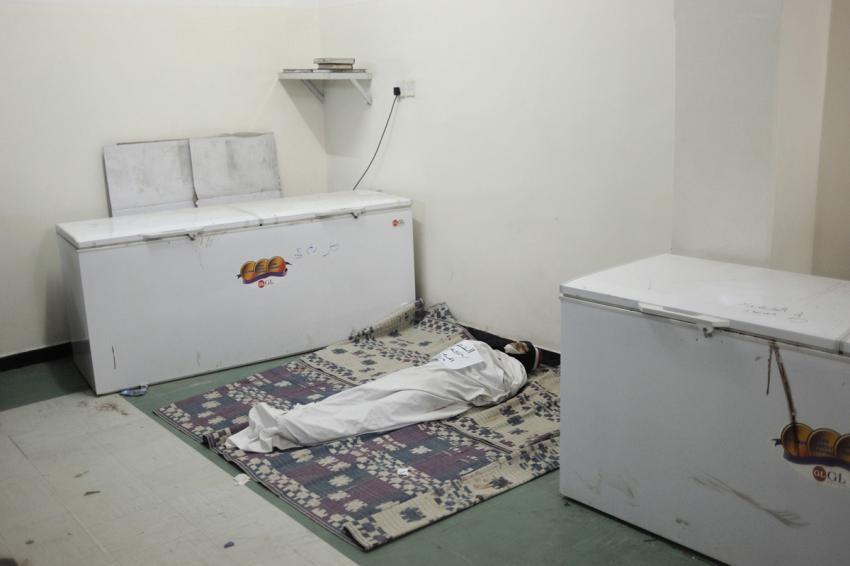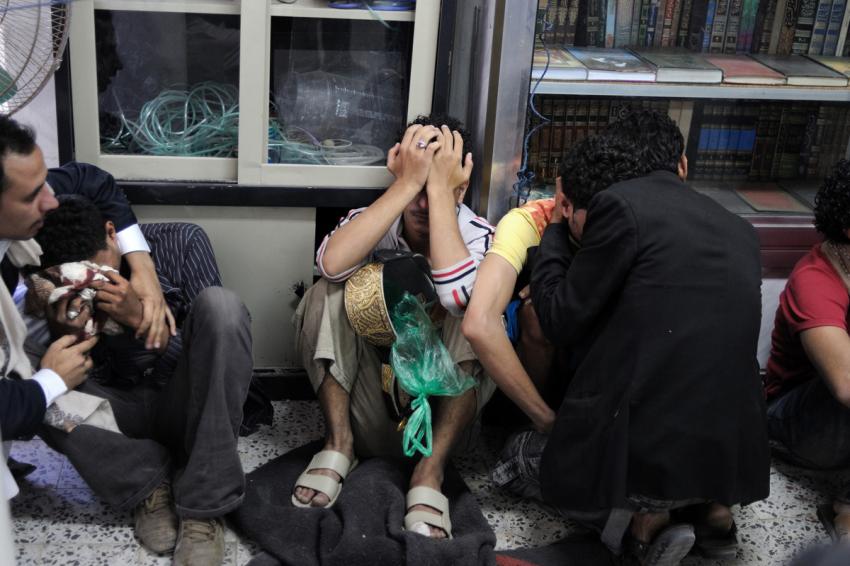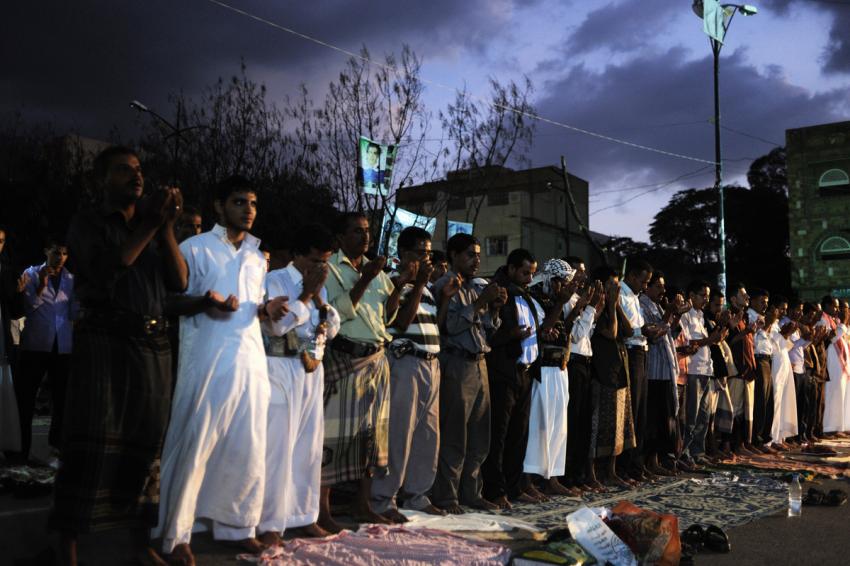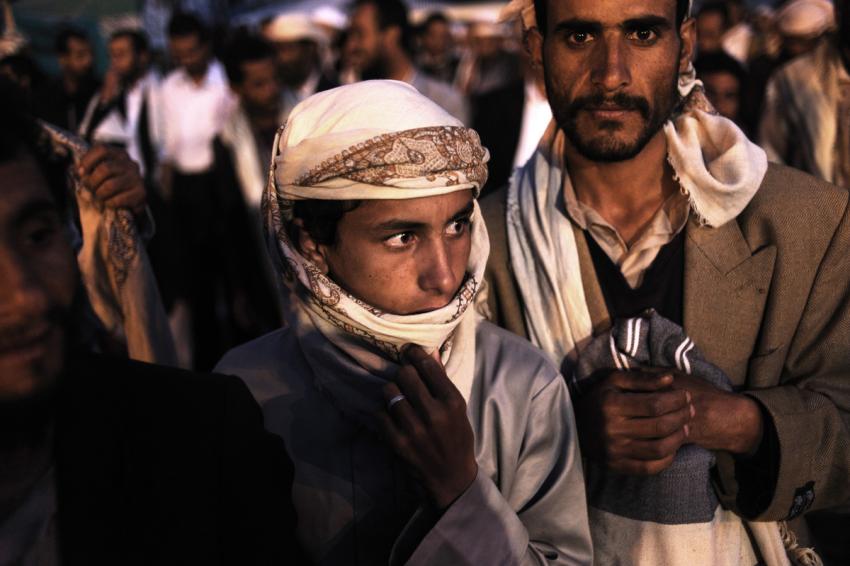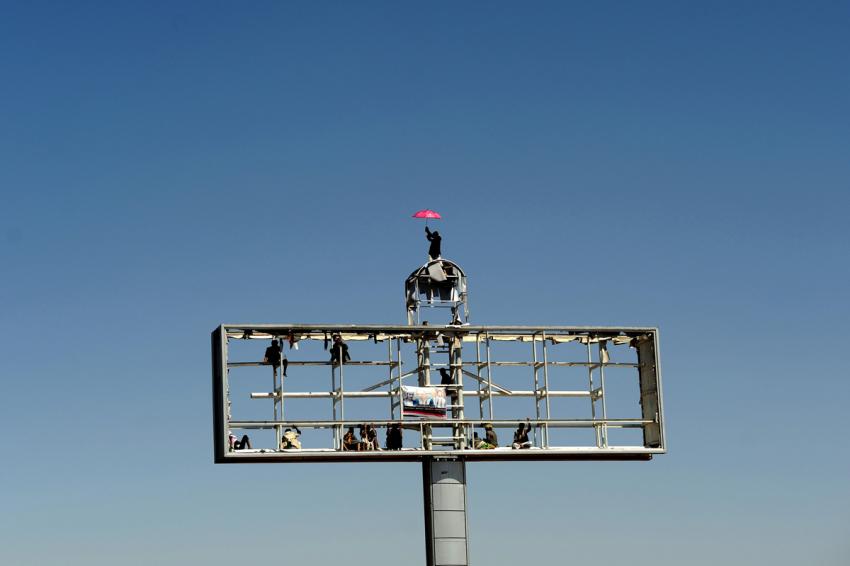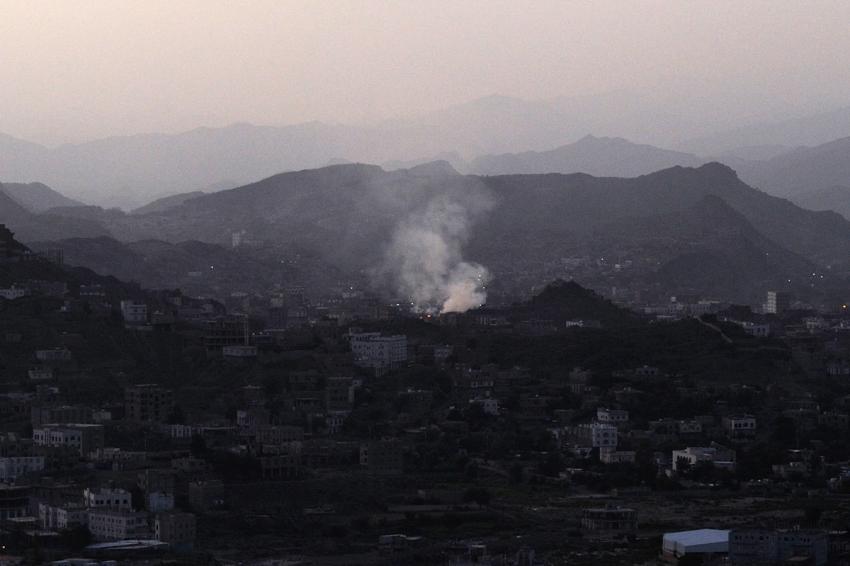After 33 years of “dancing on the heads of snakes,” as outgoing Yemeni President Ali Abdullah Saleh famously described the challenge of ruling the country's intricate tribal system, he and his rivals have unleashed as many deadly serpents upon Yemen’s populace in their convulsive power struggle. Yemen’s version of the Arab Spring, beginning January 27th and inspired by the Tunisian uprising, has been a violent and deadly one. Now Saleh, having been bitten himself, is in New York City for medical treatment, wounded in a powerful bomb attack inside the Presidential Palace in June. Yemen remains gripped in terror, with essential services like electricity and water highly curtailed (an intentional tactic, many Yemeni's believe, perpetuated by clashing factions), and daily life for average citizens is an ongoing struggle.
Spanish photojounalist Samuel Aranda recently returned from two-and-a-half months in Yemen on assignment for the New York Times. He brought back not only incredibly powerful work – he just won the vaunted World Press Photo of the Year award for the image that leads this essay - but also passionate reflections on the conflict and regular Yemenis, whom he calls the nicest, most welcoming people on earth...
Sana’a; The Ancient City
When I first get the assignment to go to Yemen, I expect Iraq or Afghanistan – a really aggressive environment for reporters and foreigners (and, indeed, that has been the case for several Yemeni journalists covering the conflict). Google searches portray the country almost entirely through the prism of terrorism, with images of dangerous Islamists prone to kidnapping visitors.
I get on the plane.
My arrival at El Rahaba Airport (Sana’a International) is surreal, the terminal more like a bus station from the 1950's. It’s night, and I can´t see anything; most of the terminal’s lights are out, with only a few bulbs illuminating passport control. I expect an aggressive reception - an unfriendly customs agent pressing me for reasons I would visit Yemen during such widespread instability. I didn’t expect the customs agent’s reaction, in English, to the notation in my passport that my birthplace is Barcelona:
“Do you know Messi?” (Lionel Andrés Messi Cuccittini, the high-scoring Argentine footballer who plays forward for FC Barcelona).
After a brief conversation, the animated agent stamps my passport with a big smile: "Welcome to Yemen."
The automatic door separating the airport from the street opens slowly, like everything in this country. Welcome to Yemen.
I move through a crowd outside. The men wear the long white thobe typical of the Arab world, but with suit jackets on top and long hooked knives - jambiyas - hung from ornate belts at their waists. Billboards for Coca Cola and Kentucky Fried Chicken compete with images that feel centuries older.
The road from the airport is sinister: No electricity in almost any corner of the city, the streets full of checkpoints and machine-gun fire echoing in the night. Sana’a is a divided city as I arrive: One side is controlled by the army and loyal to President Ali Abdullah Saleh, and the other by army deserters and tribesmen opposed to the government, led by Gen. Ali Mosen al-Ahmar.
Among the tribes, the most important is the al-Ahmar family. It is at the tribal level that the divisions are the most important, and most difficult to decipher.
We pass the capital’s Tahrir Square, which was taken at the beginning of the revolt by anti-regime demonstrators, then fought over in clashes with pro-Saleh tribesmen bussed into the capital and remain encamped there. The city seems a quagmire that never sleeps – an orderly chaos, not unlike many other Arab cities, where traffic flows in ordered disorder and everyone struggles to get by. Street vendors selling socks, flashlights and whatever line the sidewalks, trying to bring some money home, the hard economy of the poorest country in the Arabian Peninsula. The middle class barely exists. Those at the top navigate streets full of women selling fruit and children begging sympathy in brand new SUVs.
I get to work.
The protestors based in Change Square are diverse and well organized: Islamists, students, communists, socialists and separatists are all represented here. The demonstrations are daily - huge marches trough one of the city’s major avenues, Siteen Street. Nothing but doubt greets President Saleh’s pledge on November 23rd to sign an agreement to step down and hold elections in February.
"He has killed many innocent people," Mohammed, a young student, tells me. "We want a fair election in which we are represented, yes, but first we want Saleh to pay for what he has done."
Working in Tahrir Square, the predominantly pro-Saleh encampment, I would carefully try to gauge which side any one of the encamped activist supported.
“None of them,” is an answer that proved common. “President Saleh has been too corrupt – only concerned about stealing our money and not improving living conditions – but Ali Mosen is the same or worse, using young people who started the revolution to try to seize power for himself.” After few weeks in the country, I realize that this is a prevailing opinion here.
My time in the square is limited, to be honest. I have problems with plain clothes police, so I try to go to the square, do my work and leave; I don’t have nearly enough time to talk at length with the protestors as I would have liked. My prevailing impression, ironically, is that they feel deeply left out of the process, used by Ali Moshen “to take the chair,” as they say in Arabic. As the situation progresses, they became the only losers in this – the students and the young people. Everyone else in the transition seems to get something, except the students.
Incredibly, all these tensions disappear when you walk through the gates of the Old City of Sana’a, a UNESCO World Heritage Site and one of the oldest cities of Arabia. With its ancient, earthen houses, wonderful hidden gardens and narrow streets, the Old City’s populace seems to have adapted perfectly to the shortages, the shopkeepers lighting their shops with little oil lamps in the absence of electricity, restaurants using coal to cook meat because of the inflated gas prices, and dozens of people lining up at public fountains to fill their jerry cans with water.
The biggest risk in the Old City is being trapped for hours with one of the many people who invite me to drink tea, eat, or just sit and talk. One is Abbas, a 25-year-old who worked as a tour guide and has a deep, open expression that exudes trust. “I don’t understand why foreigners don’t come to Sana’a. We Yemenis love foreigners. There are just a few crazy people in the east of the country who have joined Al Qaeda, and most of them are not Yemenis. We need tourism back. The economy is sinking; what we need is for this revolution finish soon so that things can return to normal.”
The conversation turns to food, which we order at a nearby restaurant. Food turns to tea. After tea, waiters bring cakes. We sit for over three hours.
When it’s time to leave, the restaurant owner bats away my request for the bill: “You are my first foreign customer for nearly a year – you are my guest. Welcome to Yemen,” he says. I try to convince him to accept my money, but no way. “Please, enjoy. Please tell your friends that the city is yamila.” It means “beautiful” in Arabic. And yes, the Old City of Sana’a is very, very yamila.
Six pm brings the last call to prayer. Soon the light of sunset recedes into a deep darkness.
Taiz; A city under siege
The flight from Sana’a to Taiz City, 250 kilometers south, is just 20 minutes. Taiz has the reputation of being a cultural city, very open, and home to some of Yemen’s large companies. Taiz today is one of the great bastions of anti-Saleh protest and, as such, is the city that has experienced the revolution’s most violent episodes.
Everywhere one looks, Taiz’s buildings are full of bullet holes. Al-Rawdah, the hospital, is one of the few that admitted the wounded during demonstrations, and it has paid a price: The government shelled the hospital with tanks. From inside, I look out from one of the holes they made and see the government tanks on a hill, their turrets still pointed towards the hospital.
“We just did our job and we attended the wounded, without distinction," the hospital’s director tells us.
Driving through the streets, it is obvious that, like Sana’a, here the city is also divided, with tribesmen and armed group having arrived at the beginning of the revolt. "We came to the city to protect the demonstrators," says Sheik Hamud Al-Mahlafi, the main opposition leader in this city, commander of the armed groups that control much of Taiz.
A huge explosion rattles our car as we drive along one of Taiz's main avenues, but no one (else) bats an eye. "No problem, do not worry," says one of my local companions. "They bomb every day, but thank god, nothing happened to us today…Last week they bombed the apartment above my house. I woke up in the middle of the night and the building was in flames. I just had time to take my daughters out of bed and run to the street." I watch him bite his lower lip and try not to cry. “I just want a better future for my family, like anyone else.”
